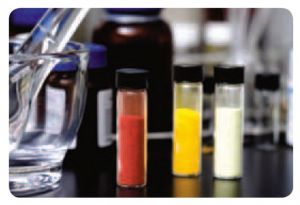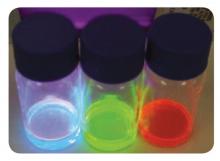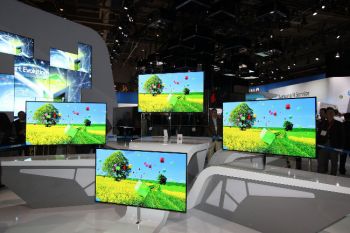Universal Display's CFO (Sidney Rosenblatt) attended Goldman Sachs Technology and Internet Conference 2012 yesterday, and he gave some very interesting updates. First of all, he commented on the recent AUO and Idemitsu Kosan (IK) agreement. According to Sid, IK are not selling emitter materials - they are offering organic materials that go into other layers of the OLED stack. They do not believe the AUO-IK agreement will have any effect of PHOLED sales to AUO, and in fact he tells us that UDC and Idemitsu Kosan are developing OLED materials together for Sony.

Host materials
In their latest earning report of 3Q 2011, UDC announced that they started to offer OLED host materials - and had almost $8 million in revenue from those materials. Today Sidney explained this business a bit further. Host materials are the materials that you put the emitting materials into (Sidney used a metaphor - if the OLED is chocolate milk, then the milk is the host material and the chocolate is the emitter). These materials are considered a commodity, and UDC didn't think to sell those as it's not an interesting market for them.
UDC did develop their own host materials, and it turned out that Samsung couldn't get good enough performance from the green PHOLED with another green host - only with UDC's host. So Samsung ended up buying the host material from UDC. This is a low margin item, but a large volume one - a typical emitter is made from 95% host materials and 5% emitter materials. UDC is asking 50% more per KG then other companies, and this is currently acceptable by Samsung.

UDC is still cautious - it may be that in the future some company will develop a different green host that is good enough. But it may be that this is a long term business for the company. They are also considering licensing their Host material for other companies to make.
OLED stack cost
When discussing Samsung's AMOLED fabs, Sidney made an interesting comment. He says that for Samsung, about 10% of the cost of an AMOLED display is the organic stack materials and the emitter material is about 1%. If we take DisplaySearch's $3.3 billion in AMOLED revenue in 2011, we end up with around $33,000,000 in emitter sales (which include the blue, green and red emitters of course). In terms of size - 1 gram of emitter material is enough to make 6,000 4" OLED panels...
Blue PHOLED
Making a blue PHOLED is still a huge challenge for UDC (a blue OLED has a short wavelength and the molecules are unstable). Interestingly, UDC is looking into a solution that involved developing other stack materials to complement their PHOLED blue to extend the lifetime and performance. Sidney reiterated the fact that UDC do not intend to start He did mention Novaled's PIN technology as adding benefits over "standard" stack materials.
WOLED vs Direct Emission
LG Display are using a WOLED-CF design for their upcoming OLED TV (white OLED emitters with color filters) as opposed to Samsung's direct emission OLED TVs. Sidney says it's still not clear which route will result in cheaper TVs - WOLED-CF has better yields, but there's also the extra cost of the filters. In any case it doesn't matter to UDC as WOLED-CF can still use PHOLED emitters.
 Samsung OLED TVs at CES 2012
Samsung OLED TVs at CES 2012
Patents
Finally, Sidney discusses the patent issues -without any news: the Duksan Hi Metal challenge in Korea (they haven't filed a response yet), the flexible substrate challenge in Europe (that was won by UDC, appealed, and then nothing happened on the last 18 months). They mention the EU patent that was discussed to length a few month ago - they indeed had to narrow down their patent (they claimed electroluminescence on all phosphorescent materials, but had to narrow it to include just organometallic.
Disclose: The writer of this post holds shares in UDC

